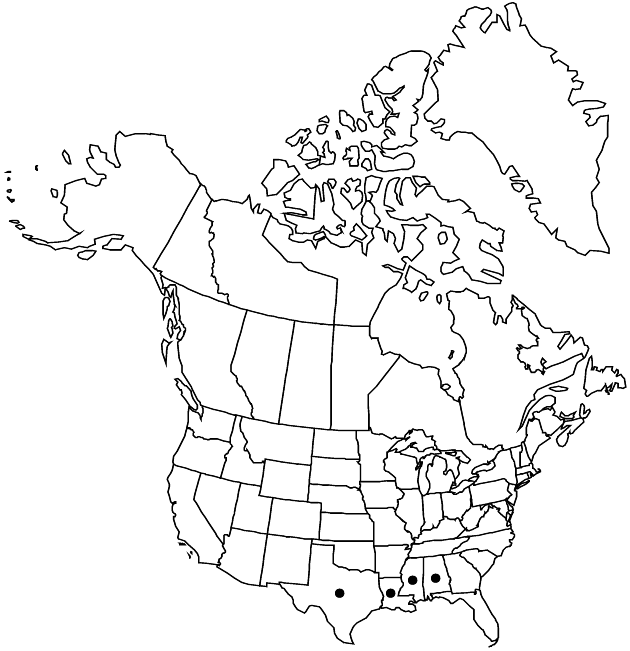Symphyotrichum puniceum var. scabricaule
Phytologia 77: 290. 1995.
Plants 100–250 (–300) cm. Stems usually densely and uniformly hirsute, sometimes less so and in lines distally. Leaves: faces ± concolorous, without dark, distinct reticulum, adaxial with distinctly impressed main veins (giving rough appearance); array leaves reduced in size relative to mid cauline. 2n = 16.
Phenology: Flowering Sep–Oct(–Nov).
Habitat: Open seepage sites with mucky, saturated soils, wet, seepy grounds in sandy pinelands, sphagnum bogs, shrubby seepage bogs, marshes, pond margins, open stream banks, roadside and drainage ditches
Elevation: 0–100+ m
Distribution

Ala., La., Miss., Tex.
Discussion
Of conservation concern.
Variety scabricaule is known from the post-oak belt of eastern Texas and in Louisiana (Natchitoches Parish), Mississippi (Grenada and Lauderdale counties), and Alabama (Penton, Chambers County, Kral 37887, BRIT). It is considered of conservation concern in Texas, where most populations occur. Variety scabricaule is in the Center for Plant Conservation’s National Collection of Endangered Plants. The hybrid Symphyotrichum puniceum var. scabricaule × S. lateriflorum was reported by G. L. Nesom (1997b).
Selected References
None.
Lower Taxa
No values specified.No values specified.